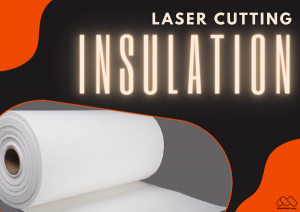Laser Strippers have become an innovative tool for removing paint from various surfaces in recent years.
While the idea of using a concentrated beam of light to strip away old paint may seem futuristic, laser paint stripping technology has proven to be a highly effective method for paint removal.
Choosing a laser to remove rust and paint from metal is easy, as long as you know what you are looking for.
1. Can you Strip Paint with a Laser?
Lasers work by emitting photons that are absorbed by the paint, causing it to break down and flake off the underlying surface. Different laser wavelengths are used depending on the type of paint being removed.
For example, carbon dioxide (CO2) lasers emitting infrared light at a wavelength of 10,600 nanometers is very effective at removing most oil- and water-based paints without damaging substrates like metal and wood.
Compared to traditional chemical strippers or sanding, laser paint stripping is generally a much cleaner process that produces little to no hazardous waste.
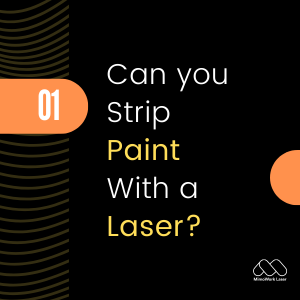
The laser selectively heats and removes only the painted top layers without affecting the material below.
This precision allows for careful paint removal around edges and in hard-to-reach areas. Lasers can also strip multiple coats of paint more efficiently than manual methods.
While the concept may seem high-tech, laser paint stripping has actually been used commercially since the 1990s.
Over the past few decades, the technology has advanced to allow for faster stripping times and treatment of larger surface areas. Portable, handheld laser units have also become available, expanding the applications for laser paint removal.
When performed by a trained operator, lasers have proven safe and effective for stripping various substrates both indoors and out.
2. What is the Process of Laser Paint Removal?
To laser strip paint, the surface is first assessed to determine the appropriate laser settings.
Factors like paint type, thickness, and substrate material are considered. CO2 lasers are then adjusted to the proper power, pulse rate, and speed based on these characteristics.
During the stripping process, the laser unit is moved across the surface in slow, steady strokes.
The concentrated infrared beam heats the paint layers, causing them to char and flake away without damaging the underlying material.
Multiple light passes may be needed to fully remove thicker paint coats or those with additional primer or sealer layers below.
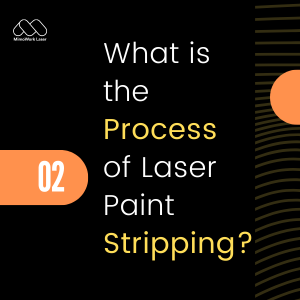
A high-powered industrial laser can strip large areas very quickly.
However, smaller surfaces or work in tighter spaces are often done by hand. In these cases, the operator guides a portable laser unit over the paint, watching for bubbling and darkening as the layers break down.
An air compressor or vacuum attachment helps clear away loosened paint chips during stripping.
Once the surface is fully exposed, any remaining paint residue or carbonized deposits are removed.
For metal, a wire brush or abrasive pad does the job.
Wood may require additional sanding for a smooth finish. The stripped material can then be inspected for quality and any touch-ups performed as needed.
With lasers, over-stripping is rarely an issue like it can be with chemical strippers.
With Precision & Non-contact Removal Capabilities
Laser Technology has Opened up Many New Applications for Paint Stripping
3. Do Laser Varnish Removers Really Work?
While lasers are very effective for paint removal.
The technology has also proven useful for eliminating rust.
Just as with paint stripping, laser rust removal works by using a high-powered light source to selectively heat and break down the rust coating on metal surfaces.
Different types of commercial laser rust removers are available depending on the size of the job.
For small-scale projects like restoring metal furniture or tools, handheld laser units allow for precise rust removal in hard-to-reach nooks and crannies.
Industrial laser systems are capable of rapidly treating much larger rusted areas on equipment, vehicles, buildings, and more.
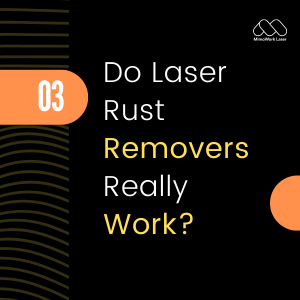
During laser rust removal, the concentrated light energy heats the rust without affecting the good metal below.
This causes the rust particles to flake or crack away from the surface in powder form, leaving the clean metal exposed.
The process is non-contact, producing no abrasive debris or toxic byproducts like traditional chemical rust removal or sandblasting.
While it may take a bit more time compared to other methods, laser rust removal is extremely effective even on heavily corroded surfaces.
The precision and control of the laser allow for thorough rust elimination without the risk of damaging the underlying substrate. And because only the rust layers are targeted, the metal's original thickness and structural integrity remain intact.
For restoration projects where protecting the base material is a priority, laser technology has proven to be a reliable rust removal solution.
When performed by a trained operator, laser rust removers can strip corrosion from a variety of metal components, vehicles, equipment, and structural steel safely and efficiently.
4. Applications for Laser Paint Removal
1. Restoration & Conservation Projects - Lasers are well-suited for carefully removing layers from antique furniture, artworks, sculptures, and other historically significant pieces.
2. Automotive Refinishing - Laser units streamline the paint stripping process on vehicle bodies, trim pieces, and other auto parts before repainting.
3. Aircraft Maintenance - Both small handheld lasers and larger industrial systems support stripping aircraft during repairs and overhaul work.
4. Boat Refinishing - Marine paints are no match for laser technology, which is safer than sanding fiberglass or other boat-building materials.
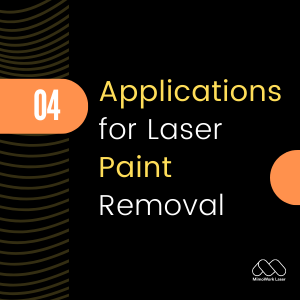
5. Graffiti Removal - Lasers can eliminate graffiti paint from virtually any surface, including delicate masonry, without damaging the underlying substrate.
6. Industrial Equipment Maintenance - Stripping large machinery, tools, molds, and other factory equipment is faster and produces less waste with laser technology.
7. Building Preservation - For restoring or cleaning up historic structures, bridges, and other architectural elements, lasers are a clean alternative to abrasive methods.
5. Benefits of Paint Laser Removal
Beyond the speed, precision, and clean removal that lasers provide, many other advantages have made this technology popular for paint-stripping applications:
1. No Hazardous Waste or Fumes Generated - Lasers produce only inert byproducts versus toxic chemicals from strippers.
2. Less Surface Damage Risk - The contact-free process avoids the risks of scratching or gouging delicate materials like sanding or scraping.
3. Multiple Coatings Removal - Lasers can eliminate heavy buildups of old paints, primers, and varnishes in one job versus layer-by-layer chemical stripping.
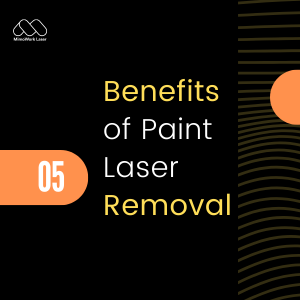
4. Controlled Process - Laser settings are adjustable for different paint types and thicknesses, ensuring a consistent, high-quality stripping result.
5. Versatility - Both large industrial lasers and compact handheld units provide flexibility for on-site or shop-based paint removal jobs.
6. Cost Savings - While laser units require investment, overall costs compare well to other methods factoring in labor, waste disposal, and surface damage risks.
6. Hazardous & Safety Tips of Laser Paint Remover
While laser paint stripping technology is much safer than other methods, there are still important safety considerations to keep in mind:
1. Laser Emission - Never look directly into the beam and always wear appropriate laser eye protection during operation.
2. Fire Hazard - Be aware of any combustible materials nearby and have an extinguisher ready in case a spark occurs.
3. Particulate Inhalation - Use respiratory protection and local ventilation when stripping to avoid inhaling fine paint chips and dust.
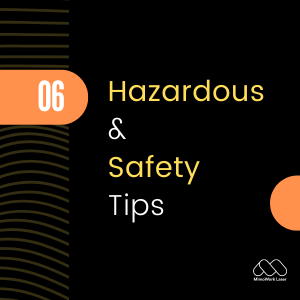
4. Hearing Protection - Some industrial lasers are loud and require ear protection for the operator.
5. Proper Training - Only trained operators should use laser equipment. Know emergency shutdown and have lockout procedures.
6. Personal Protective Equipment - As with any industrial process, follow requirements for laser-rated safety glasses, gloves, closed-toe shoes, and protective clothing.
7. Post-stripping Residue - Allow surfaces to fully cool and ventilate the area before handling any remaining dust or debris without proper PPE.
Stripping time can vary significantly depending on factors like paint thickness, substrate material, and laser power.
As a rough guideline, plan on 15-30 minutes per square foot for an average of 1-2 coat jobs. Heavily layered surfaces may take an hour or more per square foot.
Yes, with the proper laser settings most common industrial coatings can be stripped including epoxies, urethanes, acrylics, and two-part paints.
The CO2 laser wavelength is especially effective on these materials.
No, lasers can selectively remove paint without damaging materials like wood, fiberglass, and metal as long as settings are optimized.
The beam only heats the pigmented paint layers for clean stripping.
Large commercial lasers are capable of stripping very large continuous areas, some over 1000 square feet per hour.
The beam is computer-controlled to efficiently treat any size job from small components to aircraft, ships, and other large structures.
Yes, any small missed spots or residue can easily be sanded or scraped after laser removal.
The clean substrate is then ready for any needed touch-up primer or paint applications.
Most states and job sites require laser safety training to operate high-powered systems. Certification as a laser safety officer may also be necessary depending on the class of laser and the scope of commercial use.
Equipment suppliers (Us) can provide appropriate training programs.
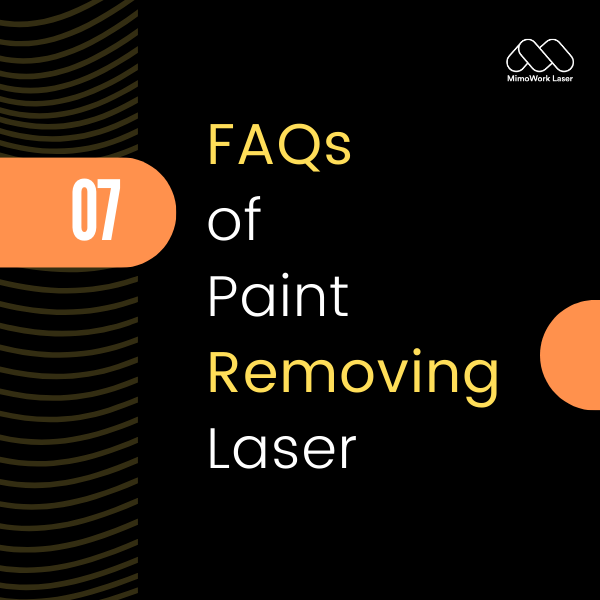
Want to Get Started with Paint Removal with Laser?
Why not Consider Us?
Post time: Feb-05-2024




